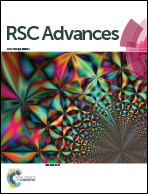Two-dimensional ferromagnetic iron crystals constrained by graphene edges: a first principles study
Abstract
Graphene edges, the thinnest and strongest support, may provide necessary constraint in preventing the collapse of two-dimensional (2D) crystals into 3D clusters, as studied by density functional theory (DFT). An epitaxial relation is ensured by the negligible lattice mismatch between the monolayer iron crystal and the zigzag graphene edge. The 1D coherent interfaces suggest new contact prototypes between 2D crystals with different bonding natures. Three different interfacial structures were proposed. The corresponding electronic and magnetic structures were systematically studied by DFT methods. In addition, the lower dimensionality remarkably alters the orbital overlaps, resulting in a large average magnetic moment of 2.68 μB per Fe atom. The strong support from the non-magnetic graphene enables the construction of a 2D device prototype.


 Please wait while we load your content...
Please wait while we load your content...